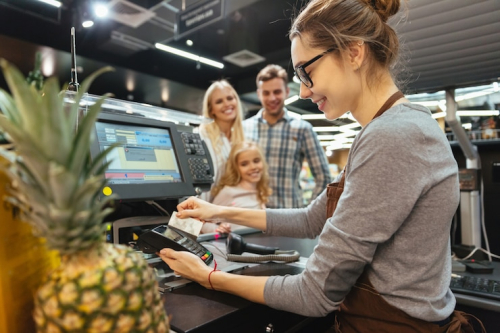Quick Listen:
In the high-stakes world of restaurants, where every dish is a performance and every service a balancing act, inventory control is the unsung hero that keeps operations humming. Get it wrong, and the consequences are brutal: spoiled ingredients, overstocked pantries, or missing items can drain profits faster than a rush-hour mistake. The global inventory management software market, valued at $2.3 billion in 2023 and projected to reach $4.8 billion by 2032 with an 8.7% CAGR, signals a seismic shift. Restaurants, from cozy bistros to sprawling chains, are recognizing that technology isn’t a luxury it’s a necessity for staying lean, efficient, and competitive.
Poor inventory practices don’t just disrupt operations; they erode margins and alienate customers who expect their favorite dishes to be available. A single misstep overordering perishables or missing a delivery can cost thousands. Yet, the rise of sophisticated restaurant software is rewriting the narrative, helping operators curb waste, optimize costs, and gain unprecedented visibility into their stockrooms. Let’s unpack the most common inventory mistakes restaurants make and explore how cutting-edge technology is turning chaos into control.
The Evolution of Inventory Management
The days of tallying stock with pen and paper or grappling with error-riddled spreadsheets are fading fast. Today’s restaurant industry is embracing cloud-based platforms, mobile apps, and AI-driven tools that transform inventory control into a strategic advantage. The demand for these solutions is fueled by a surge in business process automation, delivering real-time data, predictive analytics, and seamless workflows. These systems don’t just track inventory they optimize it, ensuring restaurants maintain just the right stock levels without tying up capital in excess goods.
Key trends are shaping this transformation. Cloud-based systems provide scalability, allowing businesses to grow without outgrowing their software. Mobile apps empower managers to monitor stock from the kitchen or on the go. Artificial intelligence forecasts demand, alerting operators to potential spoilage or shortages before they hit. With increasingly complex supply chains, restaurants are adopting software that integrates with vendors for real-time transparency, a far cry from the guesswork of manual processes.
Real-World Lessons from the Kitchen
The stakes of poor inventory management are starkly illustrated by real-world examples. Consider a mid-sized fast-casual chain that overordered avocados in a burst of optimism, only to see thousands of dollars spoil when demand faltered. After implementing a cloud-based system with threshold alerts, they fine-tuned their ordering, slashing waste and aligning stock with actual needs.
An upscale bistro faced a different challenge: manual counts and spreadsheets left room for errors and theft. Staff would quietly take home bottles of wine or extra proteins, and the numbers never reconciled. Switching to a digital platform with audit trails and access logs cut shrinkage dramatically, holding everyone accountable. Meanwhile, a ghost kitchen turned spoilage into savings by using automated reordering tied to sales data, ensuring ingredients were used before expiration. These stories underscore a universal truth: technology can tame even the most chaotic operations.
Common Inventory Pitfalls Restaurants Must Avoid
Inventory missteps are often rooted in outdated practices. Here are the most critical errors restaurants make:
- Inconsistent Counts: Manual counts, often done by distracted staff during busy shifts, are prone to errors, leading to inaccurate stock levels.
- Failure to Track Usage vs. Sales: Without linking ingredient depletion to dishes sold, restaurants can’t accurately gauge costs or forecast needs.
- Isolated Systems: Standalone inventory tools that don’t integrate with POS or vendor platforms create data silos, fostering inefficiency.
- Ignoring Alerts and Expiration Tracking: Skipping low-stock notifications or expiration monitoring leads to stockouts or wasted food.
- Overreliance on Spreadsheets: A single typo in a spreadsheet can throw off orders, wasting time and money.
As Fortune Business Insights reports, the market’s 9.6% CAGR reflects a growing appetite for tools that eliminate these pain points through automation and integration.
How Technology Solves These Challenges
Modern restaurant software is a game-changer, delivering solutions that work smarter so operators don’t have to. Automated tracking provides real-time visibility into stock levels, accessible at a glance. AI-powered predictive analytics align supply with demand, flagging reorder points or overstock risks. For example, a system might recognize that Friday’s dinner rush calls for extra chicken wings and adjust orders proactively.
Inventory apps now sync seamlessly with kitchen display systems and prep stations, ensuring alignment between front and back of house. Setting PAR (Periodic Automatic Replenishment) levels prevents shortages and overstocking. Integration with accounting and procurement tools empowers restaurants to negotiate better vendor deals based on precise data. According to Grand View Research, the market’s 6.7% CAGR is driven by the e-commerce boom and supply chain complexities challenges restaurants face daily.
Big-box retailers like Target and Walmart are already leveraging AI to prevent shortages, as noted by Business Insider. Target’s inventory availability has improved annually for four years, thanks to proactive AI adjustments. Restaurants can adopt this approach, using technology to anticipate disruptions and maintain optimal stock levels.
The Financial Impact of Smart Inventory Management
The benefits of advanced inventory tools extend directly to the bottom line. By catching spoilage early, these systems slash food waste. They reduce labor costs by automating manual tasks, freeing staff from time-consuming counts. Historical usage data informs smarter vendor negotiations, while leaner inventory boosts cash flow. Digital records streamline audits and compliance, saving additional resources. The retail inventory software market, valued at $1.59 billion in 2024 and projected to reach $3.2 billion by 2030 with a 12.36% CAGR, highlights how these tools are reshaping profitability across industries.
Navigating the Challenges of Digital Adoption
Transitioning to digital inventory systems isn’t without hurdles. Staff may resist new workflows, wary of learning “another app.” Training demands time, and small operators often balk at software costs, even if the long-term savings are clear. Legacy POS systems can complicate integration with modern platforms. Yet, as Business Research Insights notes, the market’s 9.94% CAGR reflects a shift toward digital solutions, with technologies like RFID and IoT enhancing tracking precision. The growing pains are real, but the rewards are transformative.
Expert Tips for a Smooth Transition
Food tech consultants offer practical advice for adopting inventory software:
- Audit Your Process: Identify bottlenecks in your current system to prioritize features that address them.
- Emphasize Integration: Choose software that syncs with your POS for real-time insights.
- Start Small: Begin with features like low-stock alerts or PAR levels before scaling to AI forecasting.
- Leverage Affordable Options: Platforms like Square or Toast offer cost-effective inventory tools for small operators.
The goal is to treat technology as a partner that enhances efficiency, not a burden that complicates workflows.
A Strategic Edge for Every Restaurant
Inventory control is more than counting stock it’s a strategic lever for profitability. In an industry with razor-thin margins, restaurants that master it gain a competitive edge. Modern software shifts operators from reactive problem-solving to proactive planning, turning stockrooms into hubs of efficiency. The market’s trajectory toward $8.69 billion by 2033 underscores that technology is the future of inventory management.
It’s time to retire the spreadsheets and embrace tools that let you focus on what truly matters: crafting exceptional food and delighting customers. Inventory software isn’t an expense it’s an investment in your restaurant’s longevity. In a world where every dollar counts, that’s a decision that pays dividends.
Disclaimer: The above helpful resources content contains personal opinions and experiences. The information provided is for general knowledge and does not constitute professional advice.
You may also be interested in: 7 Best Restaurant POS Systems 2024
Scattered systems and manual processes erode your restaurant’s margins daily. Milagro unifies POS, digital menus, online ordering, staffing, loyalty, and AI-powered marketing into one platform, slashing costs and enhancing guest loyalty. Reclaim control over operations and drive revenue growth. Streamline your workflow and elevate profitability. Schedule your Milagro demo today!
Powered by flareAI.






